Microbial Nutrition and Growth Overview
1/84
There's no tags or description
Looks like no tags are added yet.
Name | Mastery | Learn | Test | Matching | Spaced |
|---|
No study sessions yet.
85 Terms
Essential nutrient
must be provided to an organism
Macronutrients
large quantities, role in cell structure and metabolism: Carbon, hydrogen, and oxygen
Micronutrients
much smaller amounts, involved in enzyme function, maintenance of protein structure
Examples of micronutrients
manganese, zinc, nickel
Heterotroph
must obtain its carbon in an organic form
Autotroph
uses inorganic CO2 as its carbon source: Converts CO2 into organic compounds
Phototroph
photosynthesizes
Chemotroph
gets its energy from chemical compounds
Photoautotrophs
Photosynthetic; Produce organic molecules using CO2 that can be used by themselves and by heterotrophs
Chemoautotrophs
Chemoorganic autotrophs: use organic compounds for energy and inorganic compounds as a carbon source
Chemolithoautotrophs
rely totally on inorganic minerals and require neither sunlight nor organic nutrients
Chemoheterotrophs
Derive both carbon and energy from organic compounds
Saprobes
Eat dead things and recycle; feed on organic detritus from dead organisms
Parasites
Derive nutrients from the cells or tissues of a living host - from viruses to helminths
Pathogens
cause damage to tissues or even death
Ectoparasites
live on the body
Endoparasites
live in the organs and tissues
Intracellular parasites
live within cells
Obligate parasites
unable to grow outside of a living host
Common nutrients
Carbon, Oxygen, Nitrogen, Hydrogen
Essential Nutrients 2
In the table column 1 row 1, (N2) should read as N sub 2 within parenthesis; (NO3-, NO2-, or NH3) as N O sub 3 raised to the minus power comma N O sub 2 raised to the minus power, N H sub 3 within parenthesis; N 2 N sub 2; NH3 as N H sub 3
Essential Nutrients 3
In the table column 2 row 1, (P O43-) should read as P O sub 4 raised to the 3 minus power within parenthesis; (H3PO4) as H sub 3 P O sub 4 within parenthesis; and NAD+ as N A D raised to the plus power. In the table column 2 row 2, (S O42-) should read as S O sub 4 raised to the 2 minus power within parenthesis; (H2S) as H sub 2 S and B1 as B sub 1.
Potassium (K)
essential to protein synthesis and membrane function
Sodium (Na)
important for certain types of cell transport
Calcium (Ca)
stabilizer of cell wall and endospores of bacteria
Magnesium (Mg)
component of chlorophyll and a stabilizer of membranes and ribosomes
Iron (Fe)
important component of the cytochrome proteins of cell respiration
Zinc (Zn)
essential regulatory element for eukaryotic genetics
Diffusion
down their concentration gradient, no work, no energy required
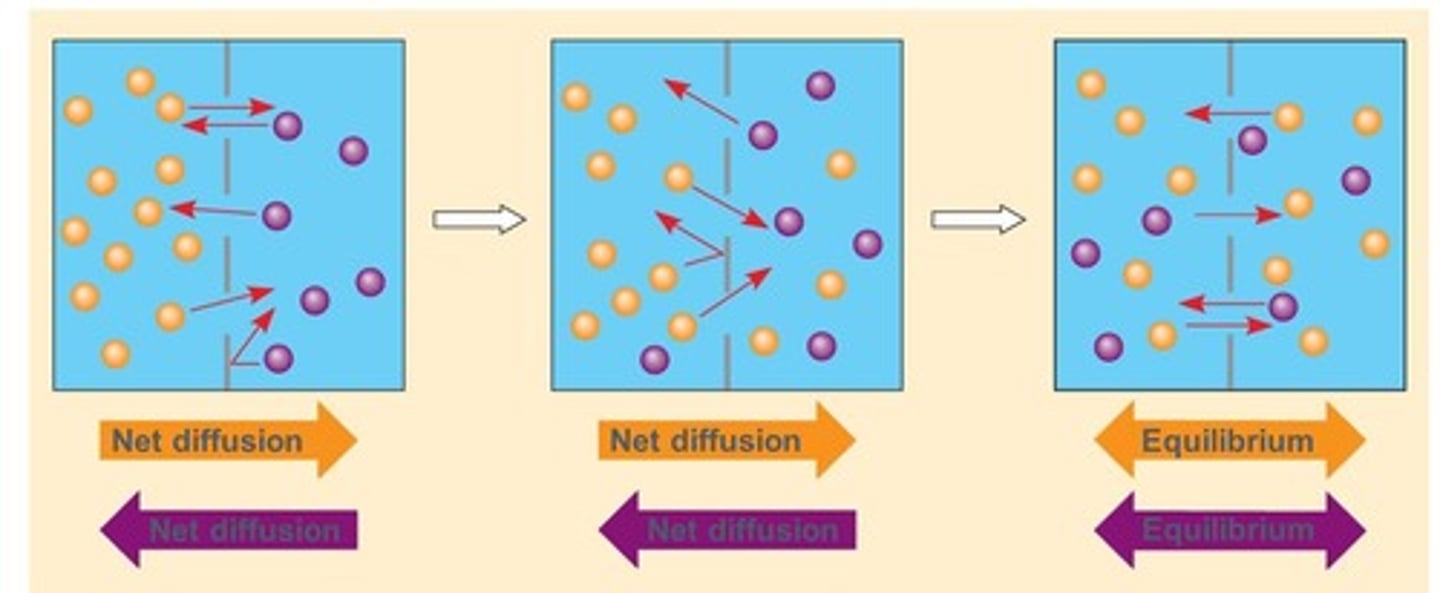
Osmosis
the diffusion of water across a selectively permeable membrane
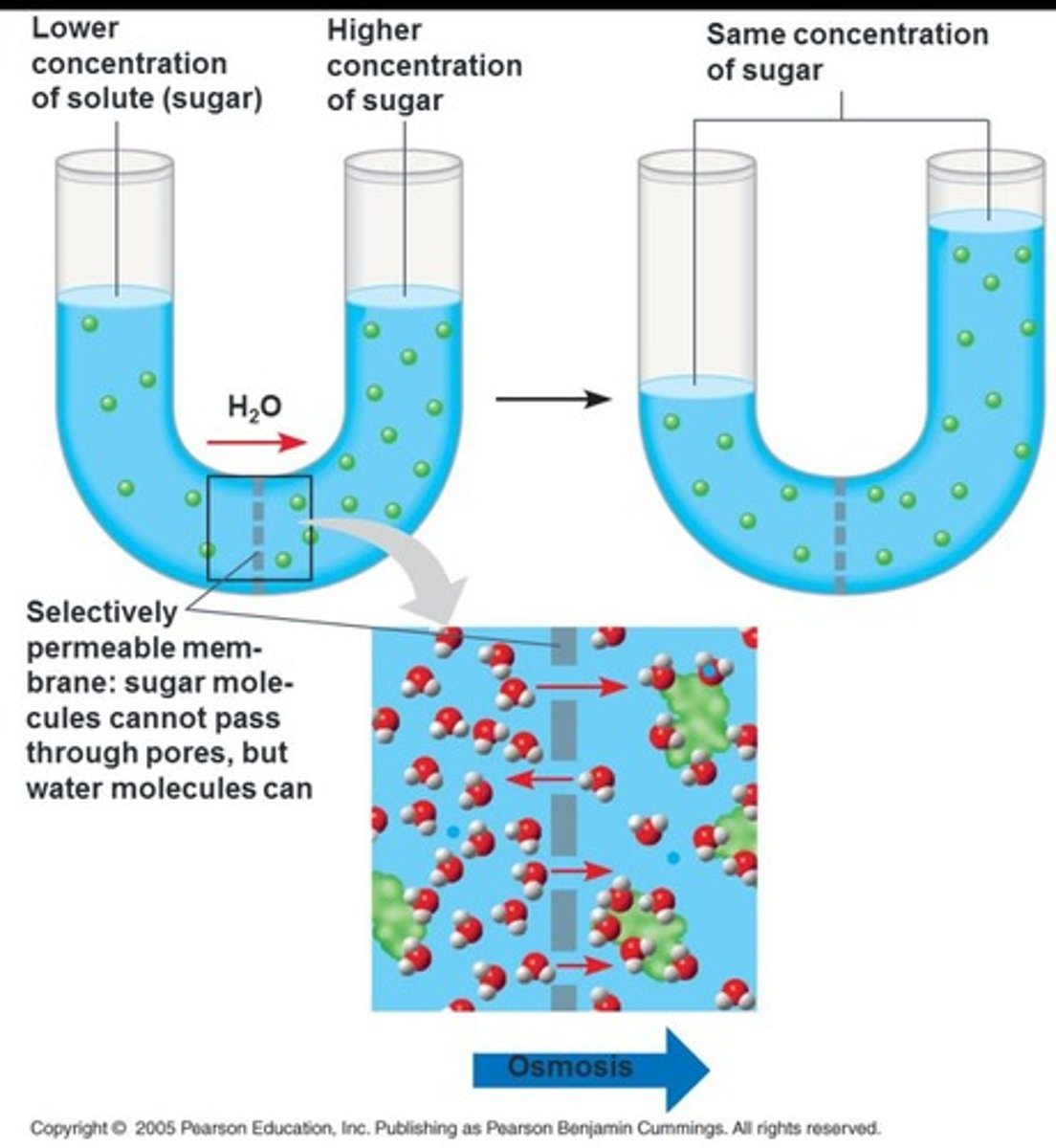
Tonicity
ability of a solution to cause a cell to gain or lose water
Isotonic solution
no net water movement across the plasma membrane
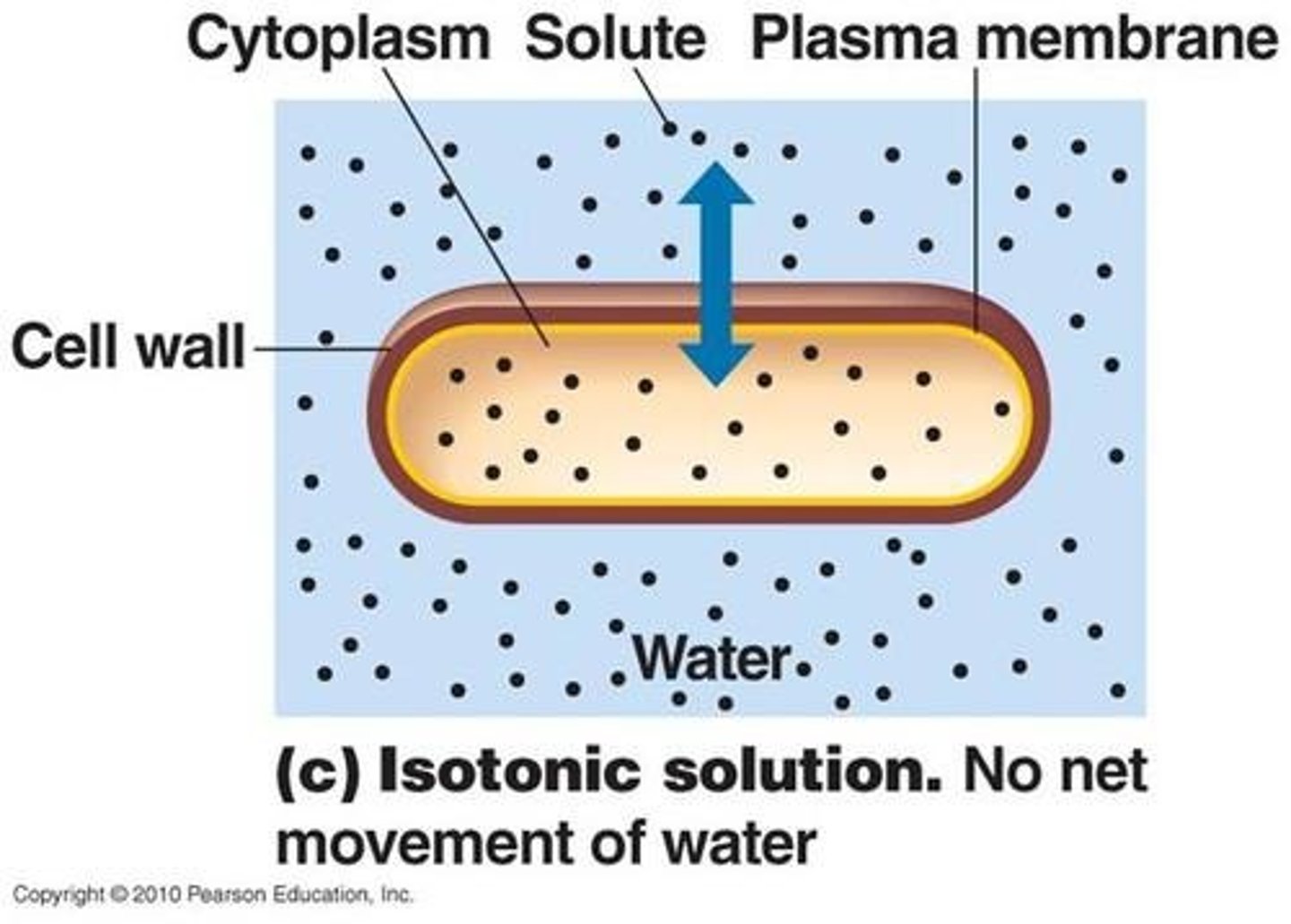
Hypertonic solution
solute concentration is greater than that inside the cell, cell loses water
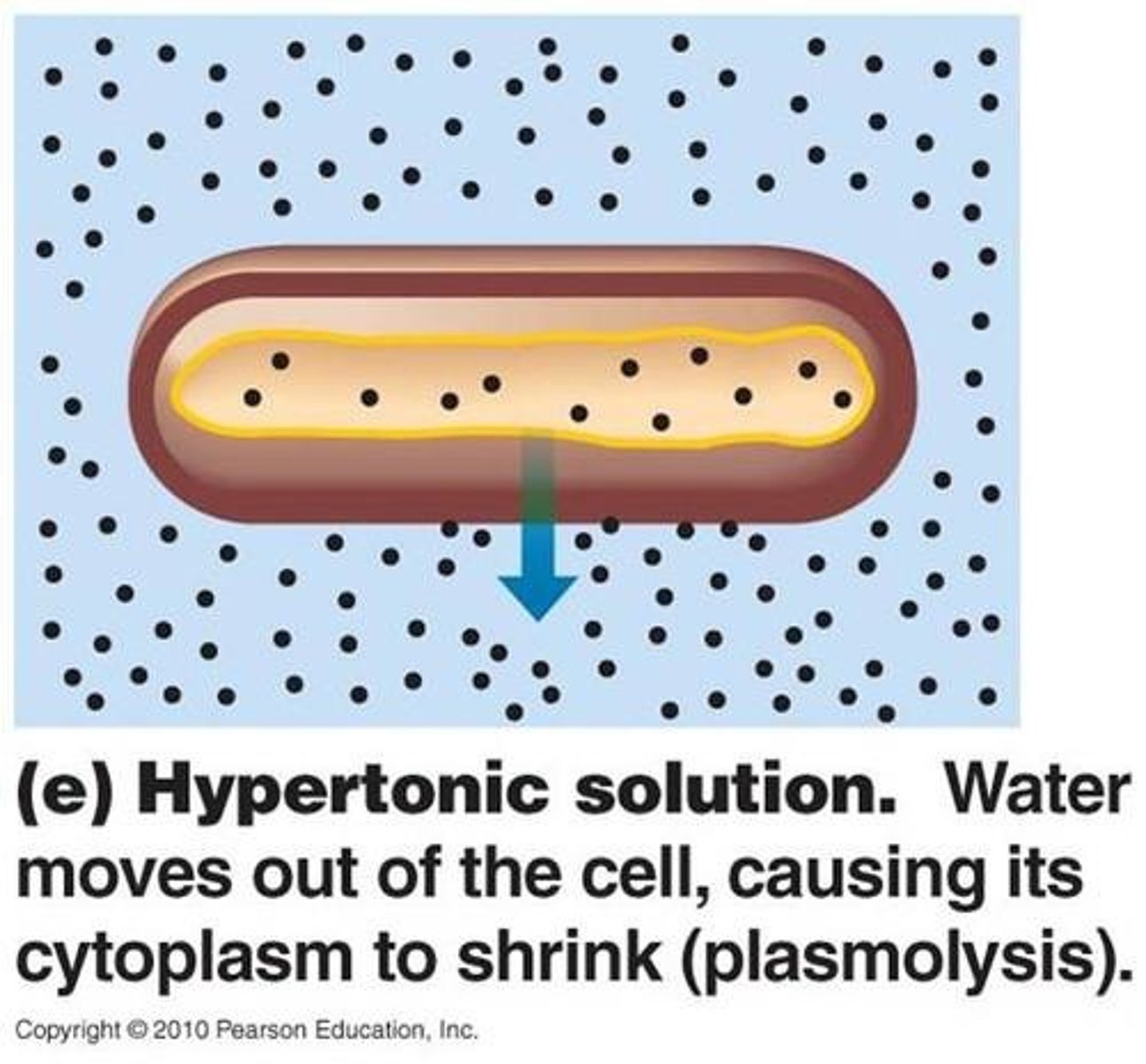
Hypotonic solution
solute concentration is less than that inside the cell, cell gains water
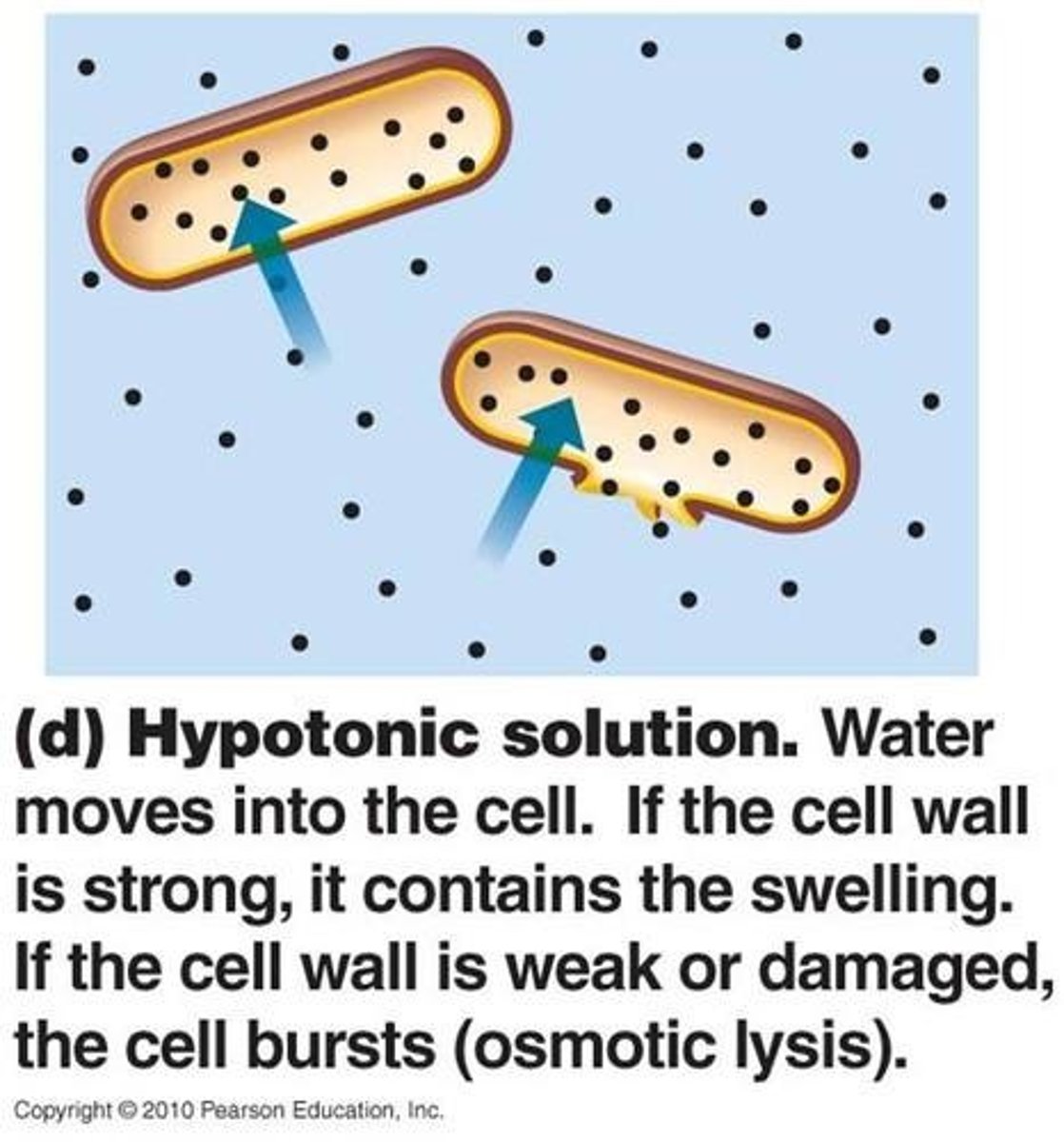
Transport proteins
Channel proteins like a straw
Facilitated Diffusion
Passive Transport Aided by Proteins
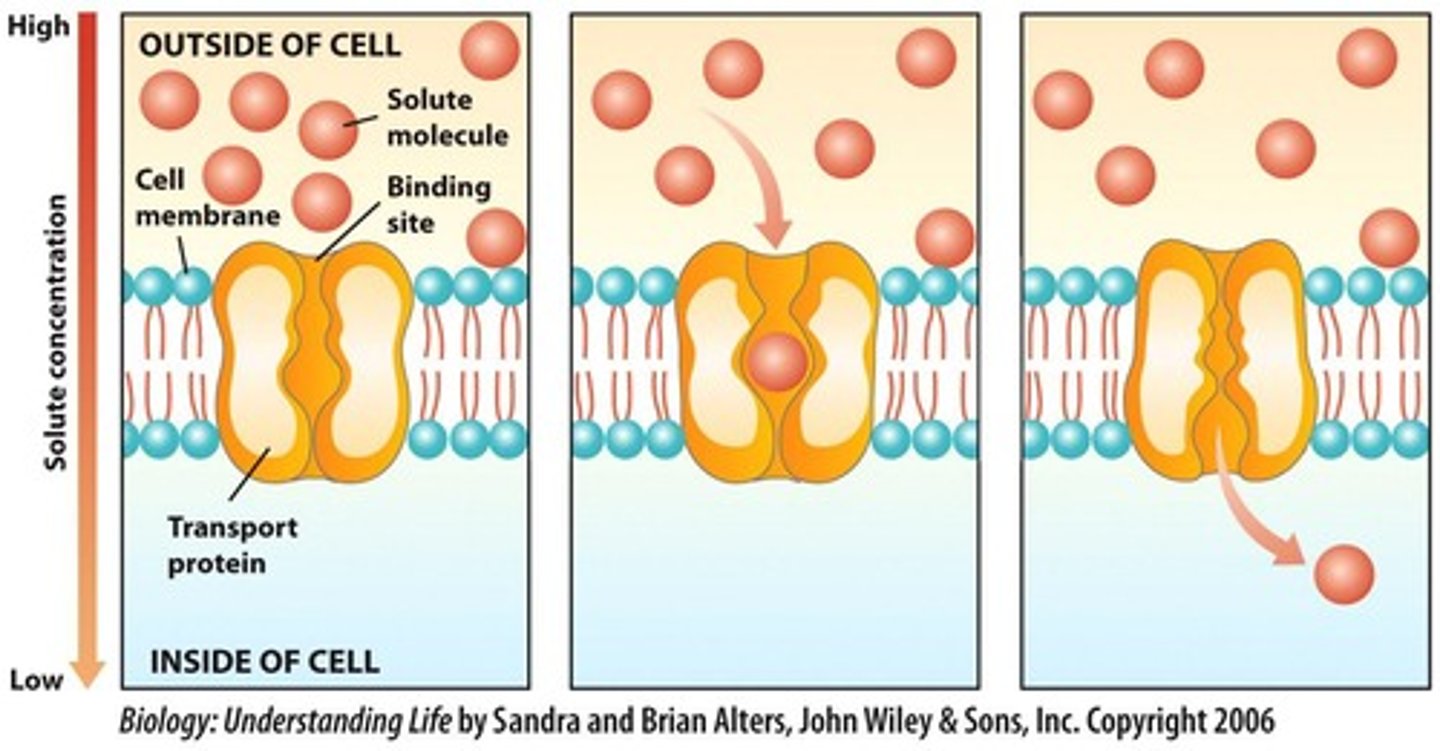
Active transport
requires energy against their concentration gradients
Sodium-potassium pump
a type of active transport that requires energy
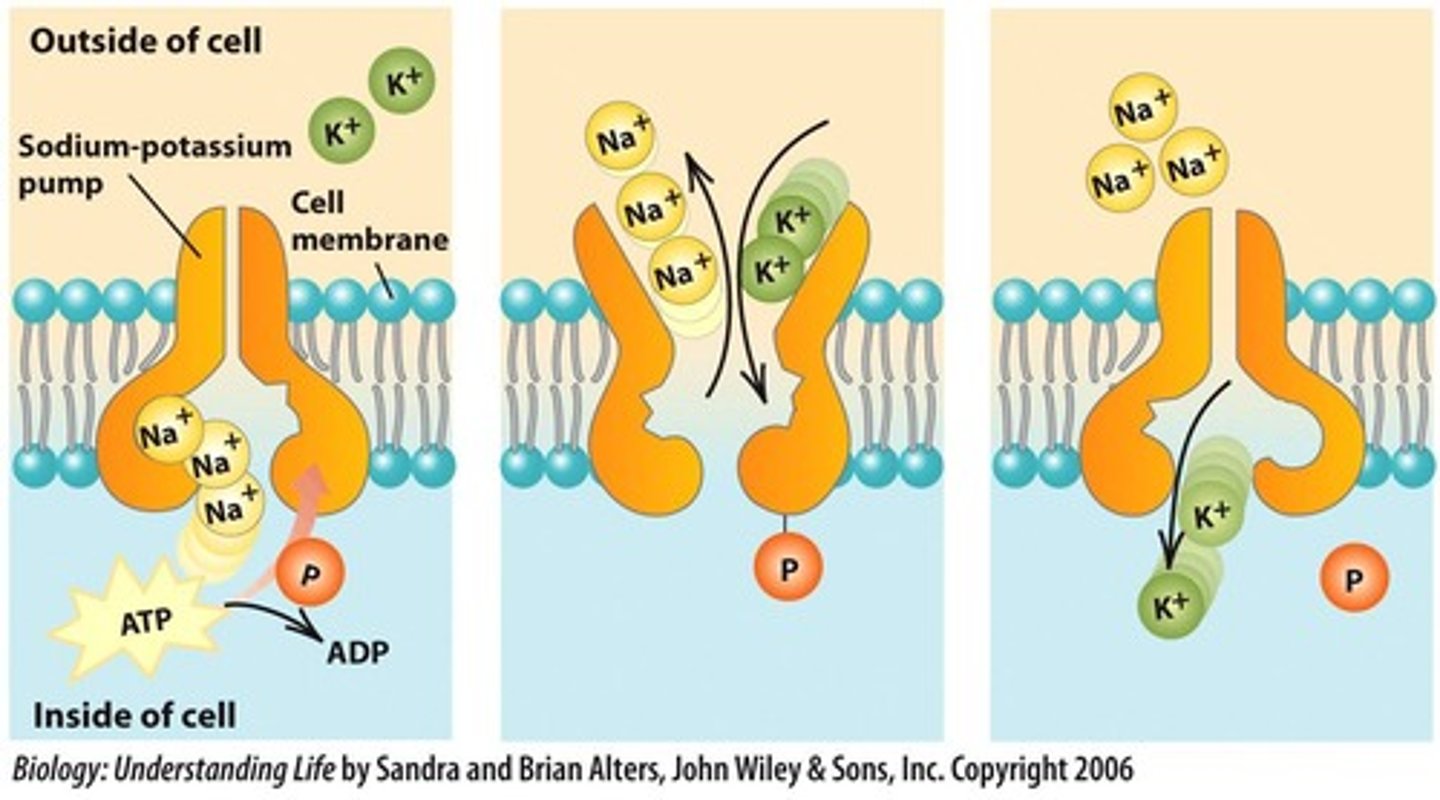
Bulk transport
across the plasma membrane for large molecules using vesicles
Endocytosis
reversal of exocytosis, includes pinocytosis and phagocytosis
Obligate aerobe
cannot grow without oxygen, examples include most fungi, protozoa, and many bacteria like Bacillus species and Mycobacterium tuberculosis
Microaerophiles
require a small amount of oxygen in metabolism, harmed by normal atmospheric concentrations of oxygen (~21%), examples include Helicobacteri pylori and Borrelia burgdorferi
Facultative anaerobes
do not require oxygen for metabolism but use it when it is present, examples include many gram-negative intestinal bacteria and staphylococci
Anaerobes
lack the metabolic enzyme systems for using oxygen in respiration, obligate anaerobes lack the enzymes for processing toxic oxygen and die in presence of oxygen, examples include many oral bacteria and intestinal bacteria.
Aerotolerant anaerobes
Do not utilize oxygen but can survive and grow to a limited extent in its presence.
Capnophiles
Organisms that grow best at a higher CO2 tension than is normally present in the atmosphere.
Cardinal Temperatures
Important temperatures by species: Minimum temperature is the lowest temperature that permits growth and metabolism; Maximum temperature is the highest temperature at which growth and metabolism can proceed before proteins are denatured; Optimum temperature is between the minimum and the maximum that promotes the fastest rate of growth and metabolism.
Psychrophiles
Have an optimum temperature below 15°C, capable of growth at 0°C, and cannot grow above 20°C.
Psychrotrophs
Grow slowly in the cold but have an optimum temperature between 15°C and 30°C.
Mesophiles
Grow at intermediate temperatures between 20°C and 40°C, and are the majority of medically significant microorganisms.
Thermoduric Microbes
Can survive short exposure to high temperatures but are normally mesophiles.
Thermophiles
Grow optimally at temperatures greater than 45°C, with a range of growth from 45°C to 80°C.
Neutrophiles
Organisms that thrive in a neutral pH environment.
Acidophiles
Organisms that thrive in acidic environments.
Minimum temperature
The lowest temperature that permits growth and metabolism.
Maximum temperature
The highest temperature at which growth and metabolism can proceed before proteins are denatured.
Optimum temperature
The temperature range between the minimum and maximum that promotes the fastest rate of growth and metabolism.
Natural habitats of psychrophilic bacteria
Lakes, rivers, snowfields, polar ice, and the deep ocean.
Storage at refrigerator temperature
Causes psychrophiles to grow rather than inhibiting them.
Human pathogens optimal temperatures
Have optimal temperatures between 30°C and 40°C.
Common contaminants of heated foods
Thermoduric microbes such as Bacillus and Clostridium.
Extreme thermophiles
Grow between 80°C and 121°C.
H+ and OH- interference
Interfere with H bonding in organisms sensitive to changes in acidity.
Staphylococcus aureus
A psychrotroph that can grow at refrigerator temperatures and cause food-borne illness.
Listeria monocytogenes
A psychrotroph that can grow at refrigerator temperatures and cause food-borne illness.
Alkalophiles
Organisms that thrive in alkaline environments, such as soils and water.
Vibrio cholerae
A bacterium that causes cholera, typically found in water.
Water
Most cells die in absence of water; endospores and cysts cease most metabolic activity.
Osmotic pressure
Restricts organisms to certain environments; affects the survival of obligate and facultative halophiles.
Hydrostatic pressure
Water exerts pressure in proportion to its depth, affecting organisms living under extreme conditions.
Barophiles
Organisms that live under extreme atmospheric pressure, such as deep sea bacteria and Archaea.
Xenophyophores
Giant unicellular Eukaryotes roughly the size of a basketball.
Symbiosis
A close partnership where two organisms live together.
Mutualism
An obligatory, mutually beneficial relationship between two organisms (+/+).
Commensalism
A relationship where one organism benefits while the other is neither harmed nor benefited (+/0).
Parasitism
A relationship where one organism provides nutrients and habitat to a parasitic microbe, causing harm to the host (+/-).
Antagonism
A competitive relationship where organisms compete for space and food.
Antibiosis
The production of inhibitory compounds (antibiotics) by one organism to inhibit another.
Synergism
A relationship that benefits both organisms but is not necessary for survival; they cooperate to produce a result that neither could do alone.
Biofilms
Mixed communities of bacteria and other microbes attached to a surface and each other.
Steps in Biofilm Formation
A pioneer colonizer initially attaches to a surface, allowing other microbes to attach and form complex communities.
Quorum sensing
A process where bacteria in biofilms monitor the size of their population by activating different genes.
Generation Time
The time required for a bacterial cell to grow and divide.
Heterotrophs
Organisms that obtain their food from organic substances.
Autotrophs
Organisms that produce their own food from inorganic substances.